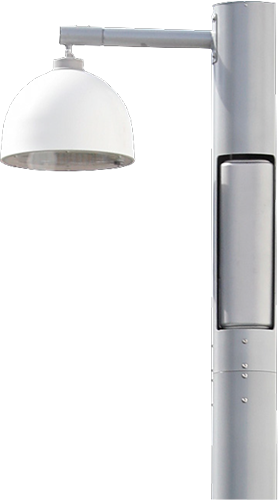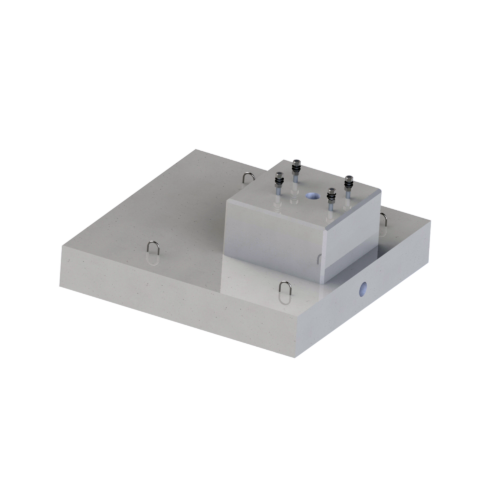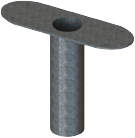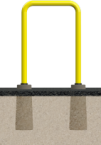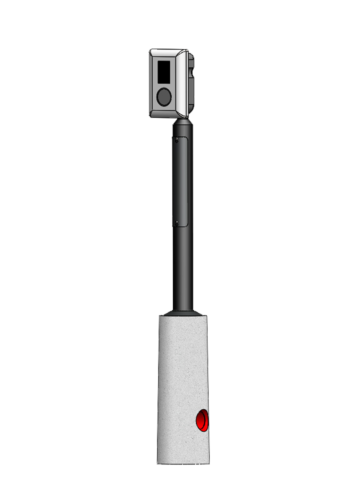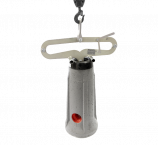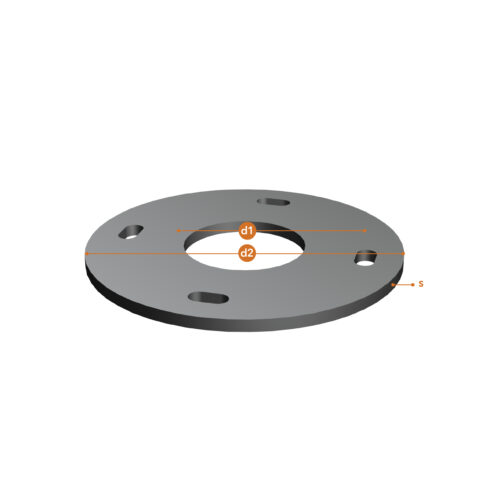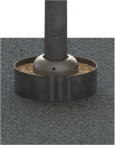A durable and cost-effective coating method for metals such as steel, aluminum and galvanized steel.
Powder is typically used to coat metal surfaces, and the powder coating is sprayed onto the surface with compressed air. Electrostaticity attaches the coating to the product, and after curing in an oven, the surface becomes extremely strong. It withstands wear and weather conditions, in addition to impacts, excellently.
If you’d like more information about powder coating, contact us – we’ll be glad to tell you more.
No traces of runoff
Compared to wet paint coating, powder coated products never have runoff, thanks to electrostatic fixation. Powder coating also serves to round off any sharp corners on the product. A smooth, even and glossy surface gives the finished pole or other product a dignified appearance.
An environmentally friendly coating
Powder coatings don’t use chlorinated hydrocarbons or organic solvents, and therefore avoid atmospheric VOC-emissions from volatile gases. In addition, the paint sprayed during the coating process is collected and reused – meaning a paint utilization rate of close to 100%!
A powder coating is always chosen with its specific application in mind. Severe climate conditions and harsh physical or chemical stress naturally require more stringent requirements for the selected powder coating compared to, for example, clean indoor spaces.
Our professional staff will be glad to help you choose the right coating, as well as clarify any questions about color availability and matching.
Powder coating binders
Polyester powders
Polyester powder is a common powder coating because it’s suited for use both indoors and outdoors. Polyester powders are suitable for coating products used outdoors in the metal industry, for example, which require good weather resistance, as well as yellowing resistance to heat and UV-radiation. For lighting poles, a polyester-based coating is the most common. For demanding conditions, a corrosion-resistant coating system compliant with the SFS-EN ISO 12944-2 environmental classification should be selected.
Epoxy powders
Epoxy powders are suitable for coating products – stored indoors – that are used in the metal industry and are required to be chemically resistant, for example, to acids and alkalis. Epoxy powders are suited for specialty applications in the metal and chemical industries.
Epoxy polyester powders
Epoxy polyester powders are best suited for indoor use where mechanical durability is required. Epoxy polyester powders are a cost-effective option because their short coating time is reflected in the price.
Polyurethane powders
Polyurethane powders are for poles whose surfaces need to resist mechanical and chemical wear. Polyurethane powders offer good production against UV-radiation, making them an ideal surface treatment option for outdoor products. Polyurethane powders are also used in anti-graffiti coatings.
Coating gloss levels and shades
Powder coatings offer a wide range of possible surface effects. Different surface structures, from rough to fine, are viable. In addition, there are many visually impressive pearlescent effects to choose from. These effects – one or all – can be used with any color.
Hammer lacquer
Hammer lacquer, as its name implies, forms a surface resembling hammered enamel. Surfaces with a hammer lacquer resist corrosion well.
Structural coatings
Structural coatings bring an interesting look to the surface of the product, like sandpaper or an orange peel effect. These are suited for both outdoor and indoor use and are most often used for electronic products and furniture.
Metal and pearlescent coatings
With the help of metallic and pearlescent coatings, your products’ surfaces can benefit from a number of visually distinctive options.
Gloss levels
- Full gloss 75-95 %
- Semi-gloss 50-70 %
- Low sheen 30-45 %
- Matte 5-25 %
- Wide range of colors
- Many different options
- RAL and RR colors
- NCS and other specialty colors
- Pearlescent and structural surfaces



